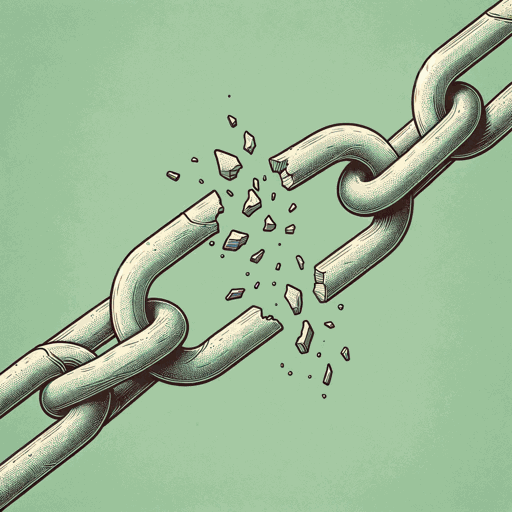34 pages • 1 hour read
Carol AndersonWhite Rage: The Unspoken Truth of Our Racial Divide
Nonfiction | Book | Adult | Published in 2016A modern alternative to SparkNotes and CliffsNotes, SuperSummary offers high-quality Study Guides with detailed chapter summaries and analysis of major themes, characters, and more.
Summary and Study Guide
Overview
Carol Anderson's 2016 nonfiction book, White Rage: The Unspoken Truth of Our Racial Divide, looks at the way African-American progress has been halted and repressed, again and again, by a powerful cocktail of economic self-interest, fear, and hatred on the part of America's white elites, a philosophy she calls "white rage." The book’s five chapters examine five crucial turning points in the African-American struggle for freedom and equality: Reconstruction and the abolition of slavery, the Great Migration, desegregation, the Civil Rights Movement, and the election of Barack Obama.
Anderson’s historiography is both unusual and rigorous and has a somewhat contrarian approach. Instead of retelling the familiar stories of these flashpoints in American history, Anderson looks into the white backlash against these marks of progress, and the way aggrieved whites have tried, and continue to try, to stop the arc of history from bending towards justice. She draws on both national sources and local ones, from Supreme Court decisions to regional newspapers and city by-laws. The stories that Anderson highlights are not necessarily the most familiar or headline-grabbing ones, but this approach suits her argument about the missed opportunities and roads not taken by American society: that every step towards racial equality in the U.S. has been resisted, compromised, and clawed back by white rage.
The book begins with the Reconstruction Era. Instead of focusing on Lincoln, the Civil War, and the Emancipation Proclamation, Anderson focuses on Lincoln’s successor, Andrew Johnson, and the enormous compromises he made, supposedly to keep the newly re-formed Union together. The Thirteenth, Fourteenth, and Fifteenth Amendments, passed in the aftermath of the Civil War, offer powerful guarantees of freedom, voting rights, and equal protection from discrimination under the law. Yet again and again, Johnson allowed the former slave states to ignore or undermine these protections with Jim Crow laws and the notoriously inhumane “Black Codes,” criminal statutes that outlined certain crimes and punishments only for black people. Johnson’s own freely-admitted racism, Anderson shows, and the anxiety and rage of a region economically dependent upon unpaid labor, allowed the promise of the Reconstruction Amendments to be set aside for a system of “slavery in all but name.”
Next, Anderson discusses the Great Migration of African Americans from the agricultural South to the industrial North, away from Jim Crow laws and the sharecropping system that had kept many blacks in conditions functionally equivalent to slavery. In a time when the nation’s industry and economy were growing at a huge rate, Anderson shows how Southern whites, in blatant defiance of capitalist principles, fought tooth-and-nail against the right of these laborers to seek a fair wage from the free market. Southern cities stopped the publication of papers advertising jobs in the north, levied huge penalties on any worker who dared to quit his job, and even stopped trains that might be carrying African Americans heading north. The second half of the chapter focuses at length on the white rage that awaited black workers who made it to the North, particularly the restrictive housing policies that confined them to ghettoes and the mob violence that erupted when they dared move into white neighborhoods.
The third chapter of White Rage treats the backlash to the landmark Supreme Court decision in the Brown vs. Board of Education case (1954), which made segregated schools illegal. Anderson details the extraordinary lengths that some states and counties went to in order to keep white and black students separate, such as abolishing public schools altogether, or fighting the implementation of the law in the courts for decades. The resistance to integrated education, Anderson claims, is another great missed opportunity of American society: instead of recognizing education as a basic right, or even recognizing advantages to a nation comprised of an educated populace, white rage poisoned its own well by handicapping the public-school system for an entire generation.
Chapter 4 deals with the Civil Rights Era, but in keeping with Anderson’s focus on reactionary measures rather than great victories, the stories of Rosa Parks or the Selma-Montgomery march are passed over in favor of the attempts by national and state legislators to dismantle the newly-passed Civil Rights and Voting Rights Acts, and to find ways to enact racist policies in a society that no longer condoned open racism. To this end, Anderson discusses not only gerrymandering and voter-suppression tactics that made it harder for African Americans to vote, but also more insidious measures, like criminal-justice reform and the War on Drugs, which worked together not only to destabilize the black community and incarcerate huge numbers of African Americans but also to associate blackness with crime in the media and the popular imagination. Anderson shows how ostensibly race-neutral political or economic issues like crime and welfare became coded or “dog-whistle” topics that masked racist intentions and attitudes.
Finally, Anderson discusses the story of the Obama presidency: not of his inspirational election, but of the oppositional rage that his election created. In the determination of Congress to obstruct and stymie the president’s every move, Anderson sees the forces of white rage, and in the renewed efforts to suppress the minority vote and dismantle the Voting Rights Act, she discerns a movement, newly energized by the election of a black president, to once again stop black advancement and achievement from taking hold in American society.


